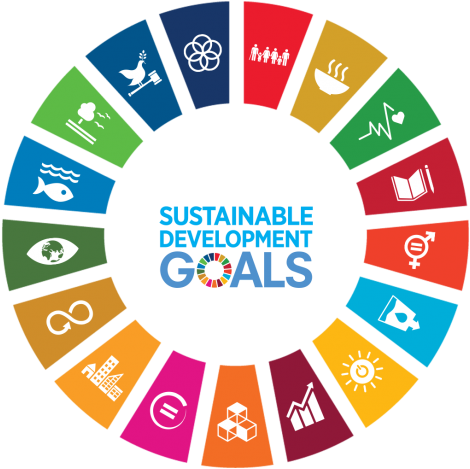The Relevance of John Dewey's Thinking to Contextual Learning in the Era of Independent Learning
DOI:
https://doi.org/10.59535/sehati.v3i3.543Keywords:
John Dewey's thinking, Contextual Learning, Independent Learning CurriculumAbstract
The rapid transformation of education in the 21st century demands approaches that move beyond traditional, teacher-centered instruction toward models that are more student-centered, experiential, and contextually relevant. In Indonesia, this shift is embodied in the Independent Curriculum (Kurikulum Merdeka), which emphasizes curriculum flexibility, local contextualization, and the active role of teachers in adapting instruction to students’ needs and environments. Within this context, John Dewey’s philosophy of progressive education, which underscores learning through experience, critical reflection, and social engagement, offers an important theoretical foundation for understanding and strengthening contemporary pedagogical practices. This study aims to examine the relevance of Dewey's educational philosophy to the implementation of contextual learning within the Independent Curriculum by employing a qualitative descriptive approach based on library research. Drawing on analyses of Dewey’s seminal works, educational policy documents, scholarly publications, and documented examples of curriculum application in schools such as SMAN 10 Kota Ternate, SDN Tomagoba Tidore, and SLB Sofifi in North Maluku, the study finds that Dewey’s principles—learning by doing, real-life experience, and student-centered engagement—are strongly reflected in current practices of contextual learning. The documented evidence highlights positive outcomes, including increased student motivation, active participation, and improved effectiveness of the learning process. These findings affirm the enduring relevance of Dewey’s educational philosophy in addressing the demands of 21st-century education and underscore the necessity of sustained policy support and continuous professional development for teachers to ensure the successful implementation of the Independent Curriculum.
Downloads
References
A. Adam, A. R. Fitrianto, A. H. Usman, S. M. Aksan, and M. Zaini, “Evaluation of the Implementation of the Annual Conference of Education Culture and Technology (ACECT) 2022 Using the Model Outcome-Based Evaluation ( OBE ),” Education Spesialist. Journal Of Tinta Emas, vol. 2, no. 1, pp. 21–26, 2024, doi: 10.59535/es.v2i1.298.
Adiyana Adam.Noviyanti Soleman, “The Portrait Of Islamic Education Online Learning During The Covid-19 Pandemic In MAN 1 Ternate,” Didaktika Religia: Journal of Islamic Education, vol. 10, no. 2, pp. 295–314, 2022.
A. Adam et al., “Penguatan Kompetensi Guru Melalui Penulisan Karya Tulis Ilmiah Berbasis Digital,” Martabe,Jurnal Pengabdian Masyarakat, vol. 8, no. 4, pp. 1729–1738, 2025.
A. B. S. Agus, Nurrahma Asnawi, Adiyana Adam, “The Influence Of Supervisor Understanding On Ire Teacher Performance In State Jhs In Bone Regency,” Didaktika Religia: Journal of Islamic Education, vol. 11, no. 2, pp. 187–206, 2023.
A. Adam et al., “Digital Divide in Education in North Maluku: The Technology Gap between Cities and Villages,” Socio-Economic and Humanistic Aspects for Township and Industry, vol. 3, no. 1, pp. 130–139, 2025, doi: Licensee:Tinta Emas Institute130©A.Adamet al.Digital Divide in Education in North Maluku: The Technology Gap between Cities and VillagesAdiyana Adam1,*, Sahrul Takim2, Rustam Tidore2,Agus Agus1, Nurmala Buamona1, Khader Rajabi31IAIN Ternate,Maluku Utara Indonesia; 2STAI Babussalam Sula,Maluku Utara, Indonesia; 3Al-Quds Open University,Palestineadiyanaadam@iain-ternate.ac.idAbstract.This document discusses the digital divide in education in North Maluku, which poses a significant challenge to the.
A. Alhubaishy and A. Aljuhani, “The challenges of instructors’ and students’ attitudes in digital transformation: A case study of Saudi Universities,” Educ Inf Technol, vol. 26, no. 4, pp. 4647–4662, Jul. 2021, doi: 10.1007/s10639-021-10491-6.
O. C. Potokri and R. I. Lumadi, “Insights for female teachers on managing learner discipline from perceptions of teachers and parents in Vuwani, Limpopo, South Africa,” Management in Education, p. 08920206251320183, Feb. 2025, doi: 10.1177/08920206251320183.
N. T. Ducker, “Bridging the Gap Between Willingness to Communicate and Learner Talk,” The Modern Language Journal, vol. 106, no. 1, pp. 216–244, 2022, doi: 10.1111/modl.12764.
A. Marougkas, C. Troussas, A. Krouska, and C. Sgouropoulou, “Virtual Reality in Education: A Review of Learning Theories, Approaches and Methodologies for the Last Decade,” Electronics, vol. 12, no. 13, Art. no. 13, Jan. 2023, doi: 10.3390/electronics12132832.
R. Im, M. Umasugi, H. Umasugi, A. Adam, S. Lumbessy, and M. Juliadarma, “Analysis of the Influence of AI on Student Learning Motivation in the Digital Era,” Electronic Journal of Education, Social Economics and Technology, vol. 6, no. 1, pp. 196–201, 2025, doi: https://doi.org/10.33122/ejeset.v6i1.384.
S. Tobón and J. Luna-Nemecio, “Complex Thinking and Sustainable Social Development: Validity and Reliability of the COMPLEX-21 Scale,” Sustainability, vol. 13, no. 12, Art. no. 12, Jan. 2021, doi: 10.3390/su13126591.
G. Makransky and R. E. Mayer, “Benefits of Taking a Virtual Field Trip in Immersive Virtual Reality: Evidence for the Immersion Principle in Multimedia Learning,” Educ Psychol Rev, vol. 34, no. 3, pp. 1771–1798, Sep. 2022, doi: 10.1007/s10648-022-09675-4.
M. B. Thomas, A. Muscat, A. Zuccolo, C. N. Luguetti, and A. Watt, “Navigating Pedagogical Innovation in Higher Education: Education Academics’Experiences with Active and Inquiry-Based Learning in Intensive Teaching,” Innov High Educ, May 2025, doi: 10.1007/s10755-025-09807-y.
C. J. Hellín, F. Calles-Esteban, A. Valledor, J. Gómez, S. Otón-Tortosa, and A. Tayebi, “Enhancing Student Motivation and Engagement through a Gamified Learning Environment,” Sustainability, vol. 15, no. 19, Art. no. 19, Jan. 2023, doi: 10.3390/su151914119.
I. Sasson, I. Yehuda, S. Miedijensky, and N. Malkinson, “Designing new learning environments: An innovative pedagogical perspective,” The Curriculum Journal, vol. 33, no. 1, pp. 61–81, 2022, doi: 10.1002/curj.125.
N. Wahlström, “School and democratic hope: The school as a space for civic literacy,” European Educational Research Journal, vol. 21, no. 6, pp. 994–1008, Nov. 2022, doi: 10.1177/14749041221086721.
A. Dieudé and T. S. Prøitz, “Curriculum policy and instructional planning: Teachers’ autonomy across various school contexts,” European Educational Research Journal, vol. 23, no. 1, pp. 28–47, Jan. 2024, doi: 10.1177/14749041221075156.
M. M. Asad, A. Naz, P. Churi, and M. M. Tahanzadeh, “Virtual Reality as Pedagogical Tool to Enhance Experiential Learning: A Systematic Literature Review,” Education Research International, vol. 2021, no. 1, p. 7061623, 2021, doi: 10.1155/2021/7061623.
R. T. Amalia and H. F. O. von Korflesch, “Entrepreneurship education in Indonesian higher education: mapping literature from the Country’s perspective,” Entrep Educ, vol. 4, no. 3, pp. 291–333, Sep. 2021, doi: 10.1007/s41959-021-00053-9.
S. Vimbelo and A. Bayaga, “Transforming Mathematics Education in TVET Colleges Through Humanising Pedagogy: An Exploration of Teaching Approaches, Student Engagement, and Real-life Examples,” IETE Journal of Education, vol. 65, no. 2, pp. 139–154, Jul. 2024, doi: 10.1080/09747338.2024.2324808.

Downloads
Published
How to Cite
Issue
Section
License
Copyright (c) 2025 Sahjad M. Aksan, Adiyana Adam, Kamarun M. Sebe, Sutria Ningsih Hairudin

This work is licensed under a Creative Commons Attribution 4.0 International License.
All articles published in Socio-Economic and Humanistic Aspects for Township and Industry (Sehati) are made available under the terms of the Creative Commons Attribution 4.0 International License (CC BY 4.0).
Under this license:
-
You are free to:
- Share — Copy and redistribute the material in any medium or format.
- Adapt — Remix, transform, and build upon the material for any purpose, even commercially.
-
Under the following terms:
- Attribution — You must give appropriate credit to the original author(s) and provide a link to the license. You must indicate if changes were made. You may do so in any reasonable manner, but not in any way that suggests the licensor endorses you or your use.
Most read articles by the same author(s)
- Adiyana Adam, Sahrul Takim, Rustam Tidore, Agus Agus, Nurmala Buamona, Khader Rajabi, Digital Divide in Education in North Maluku: The Technology Gap between Cities and Villages , Socio-Economic and Humanistic Aspects for Township and Industry: Vol. 3 No. 1 (2025): Socio-Economic and Humanistic Aspects for Township and Industry
- Adiyana Adam, Pardin Pardin, Number Head Together Co-operative Learning Model to Improve Student Learning Quality at MAN Pulau Taliabu , Socio-Economic and Humanistic Aspects for Township and Industry: Vol. 1 No. 1 (2023): Socio-Economic and Humanistic Aspects for Township and Industry
- Adiyana Adam, Ramli Yusuf, Muhlis Malaka, Minggusta Juliadarma, Mawardi Djamaluddin, Kamarun M. Sebe, The Effectiveness of Deep Learning Training on Teachers' Memorization of Interactive Teaching Modules at MAN IC West Halmahera , Socio-Economic and Humanistic Aspects for Township and Industry: Vol. 3 No. 3 (2025): Socio-Economic and Humanistic Aspects for Township and Industry











